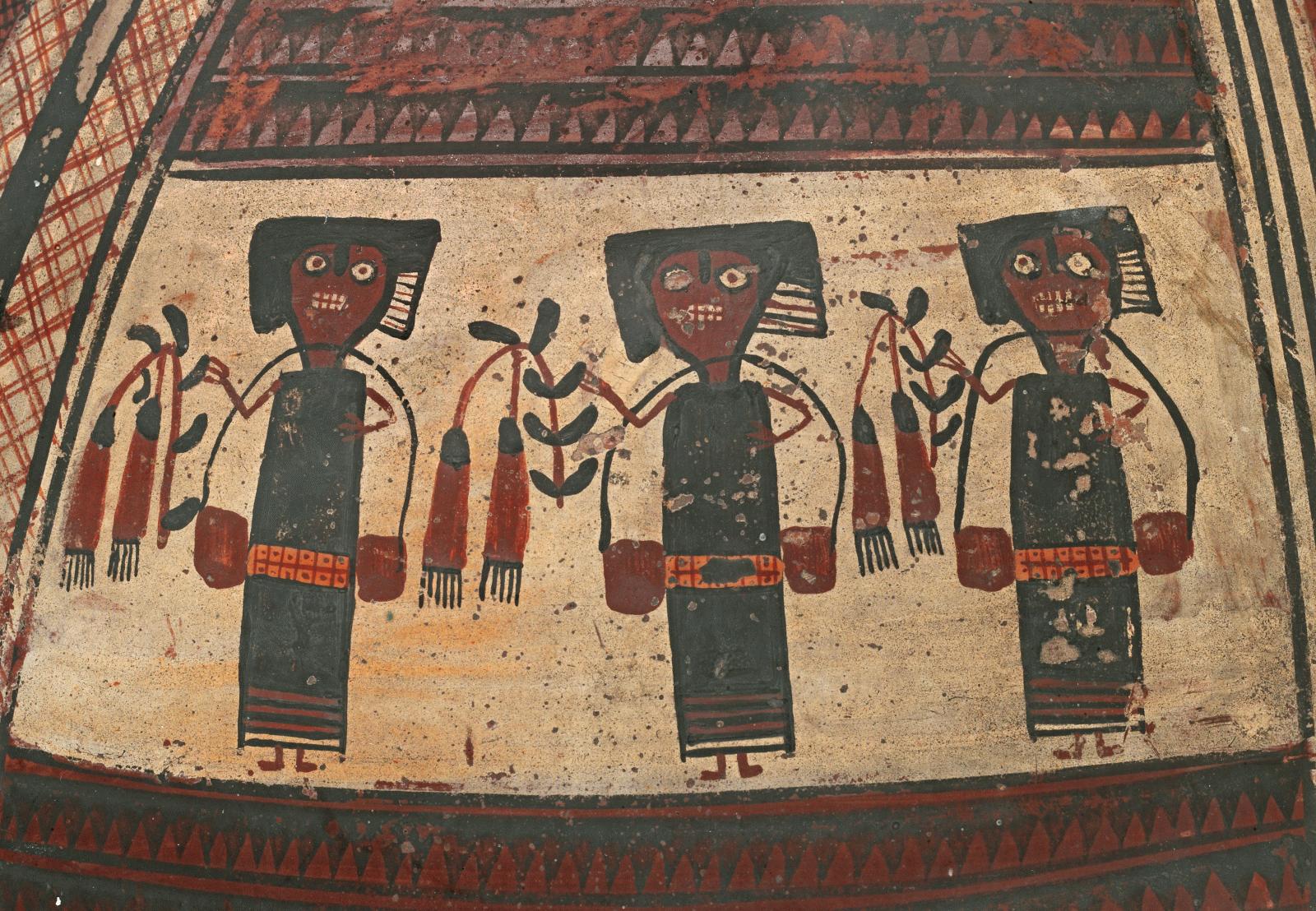Research
Mutual Growth: The Agency of Plants as reflected in Inca and Chimú Visual Culture
Bat-ami Artzi

Detail of an Inca ceramic jar with women holding branches of Waka sullu sullu (Bomarea dulcis), an abortive plant. These branches serve as an identifying attribute of the acllas, the Inca chosen women, who served the Empire’s needs and for that reason were not permitted to have offspring (V A 7896, Ethnological Museum of Berlin).
Present Andean communities express animist ontologies in several ways. One such manifestation is the perception that not only humans have the potential to rear and grow; there are potent entities that raise humans and other beings. Plants in the human domain, the cultivation areas, raise human beings, and they in turn are raised by the apus, the spirits of the sacred mountains. Similar perception was documented by Spanish colonial chronicles. Proceeding backward in time, we have information on animism among pre-colonial societies, however, these refer only to topographical features and objects. This research explores the possibility that similar conceptions regarding plant animism existed among ancient Andean societies. The research focuses on two political entities, the Inca (1400-1532 A.D) and the Chimú Kingdom of the Peruvian North coast (900-1470 A.D), which was integrated into the Inca Empire.
Given that there is no representation of a landscape with vegetation in Andean art, the representation of a specific plant warrants serious attention and consideration. It might, for example, be an identifying attribute or a motif that conveys a message. The research aims to understand the meaning of the plant representations in the two artistic styles. It also delves into the social roles and agency of the represented plants within these societies. In order to understand the social roles they played, the research explores the relations represented in art between human and plant, and between animal and plant. The study also examines whether the artistic expression of the two styles echoes animism ontologies. In addition, the research places crosswise the social role of a represented plant and the artefact's function and agency.
Since the artefacts that constitute the database of this study have dual agency, as objects and as represented plants, the research uses two types of theoretical framework related to the anthropology of art and to the anthropology of nature. In recent years, anthropologists working in these two currents have been challenging the dichotomies between humans and non-humans, in one case referring to human-made objects and in the other to all non-humans in human surroundings.
This project is part of the Research and Fellowship Program 4A Laboratory: Art Histories, Archaeologies, Anthropologies, Aesthetics, a cooperation between the Kunsthistorisches Institut in Florenz and the Stiftung Preußischer Kulturbesitz.


